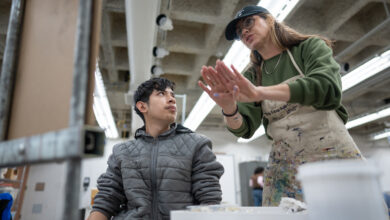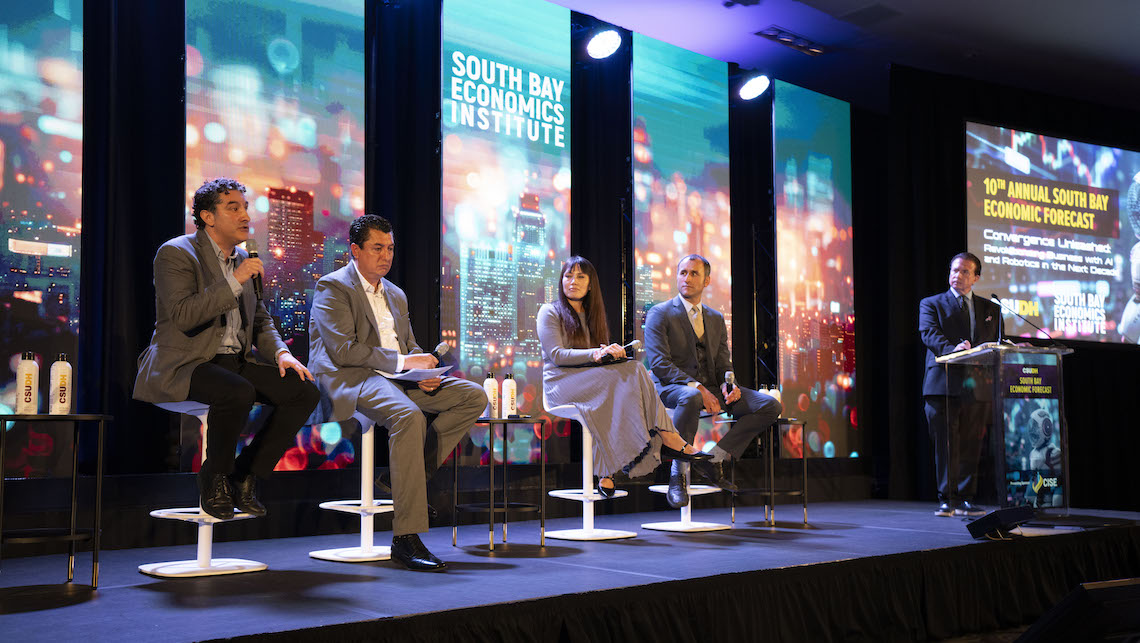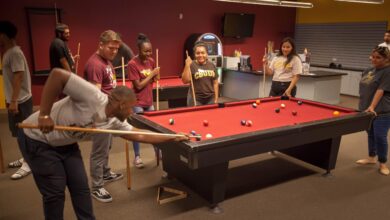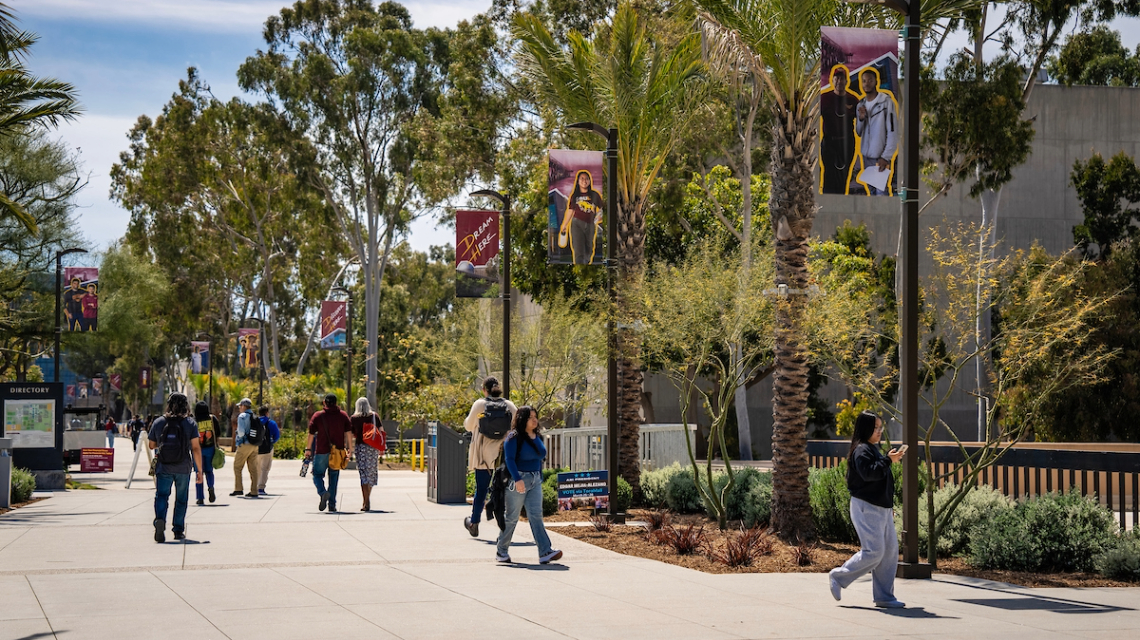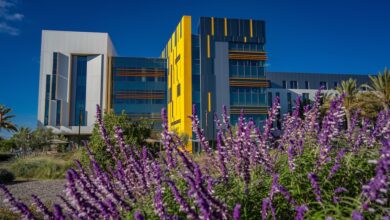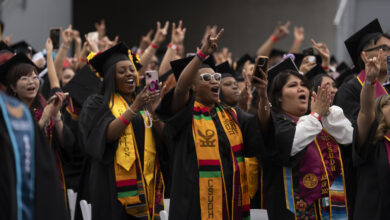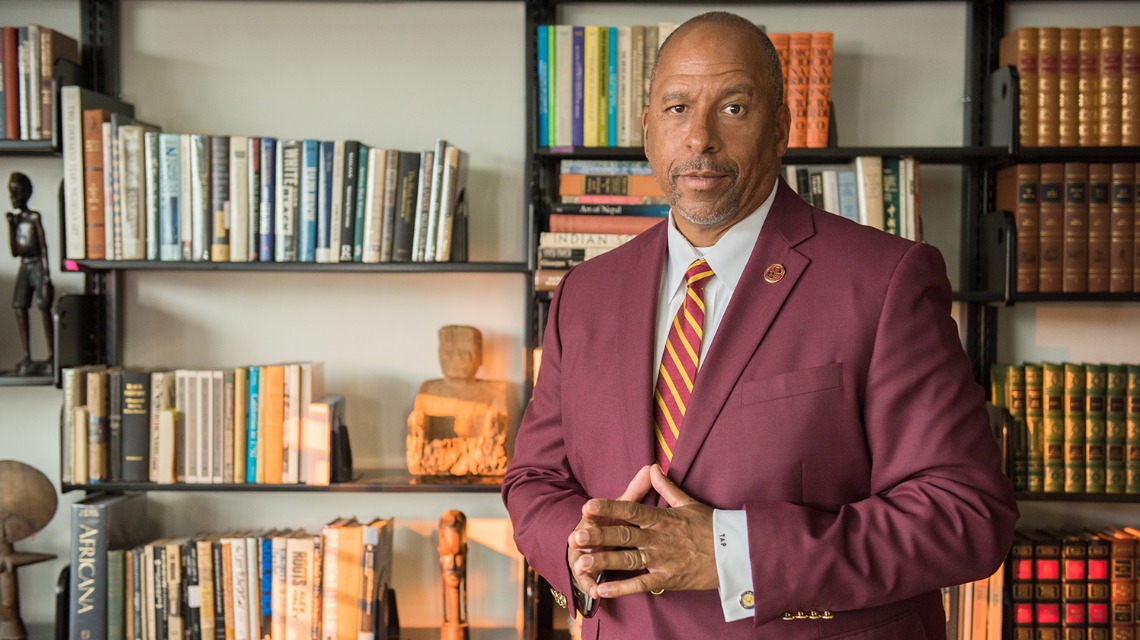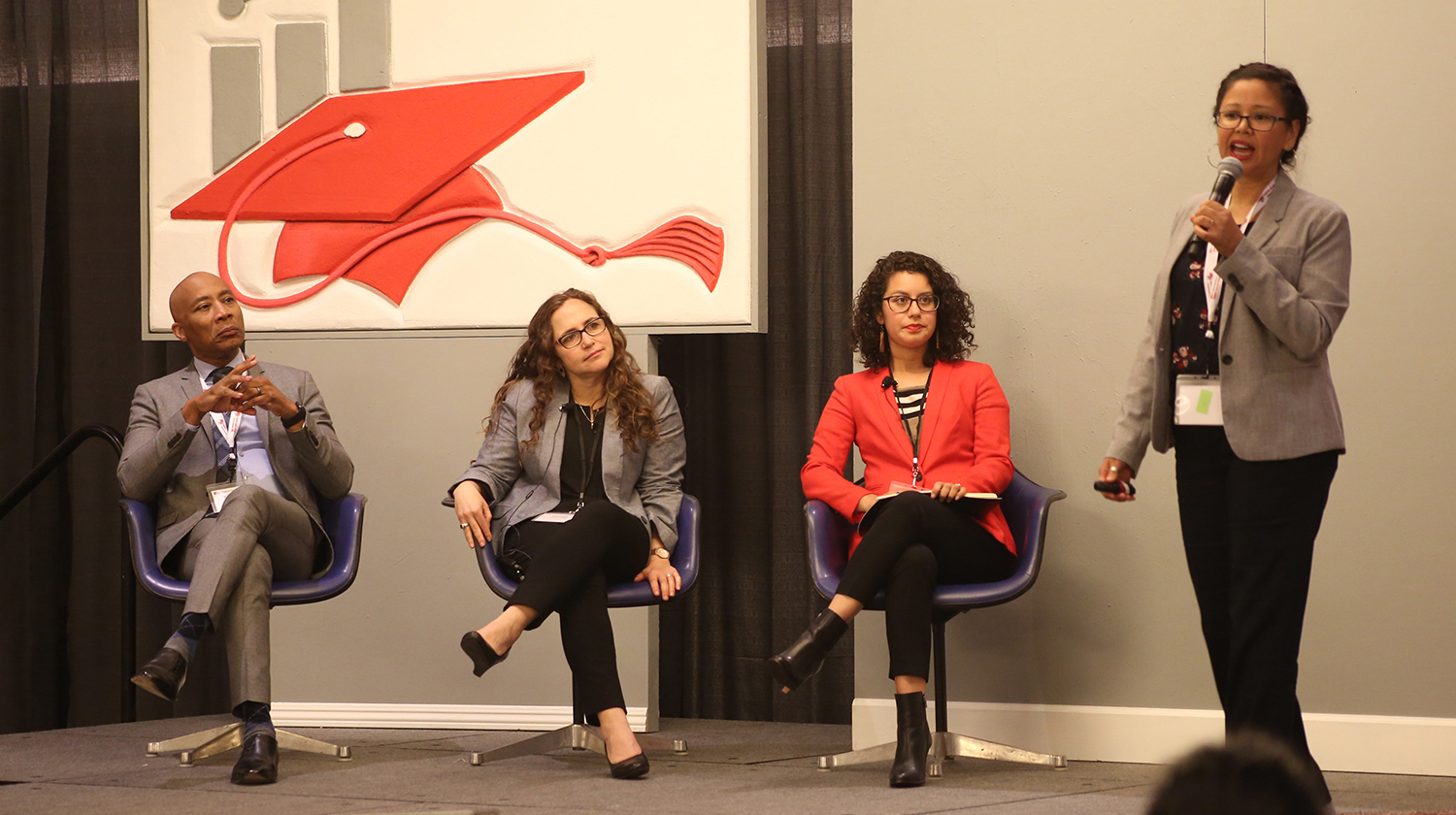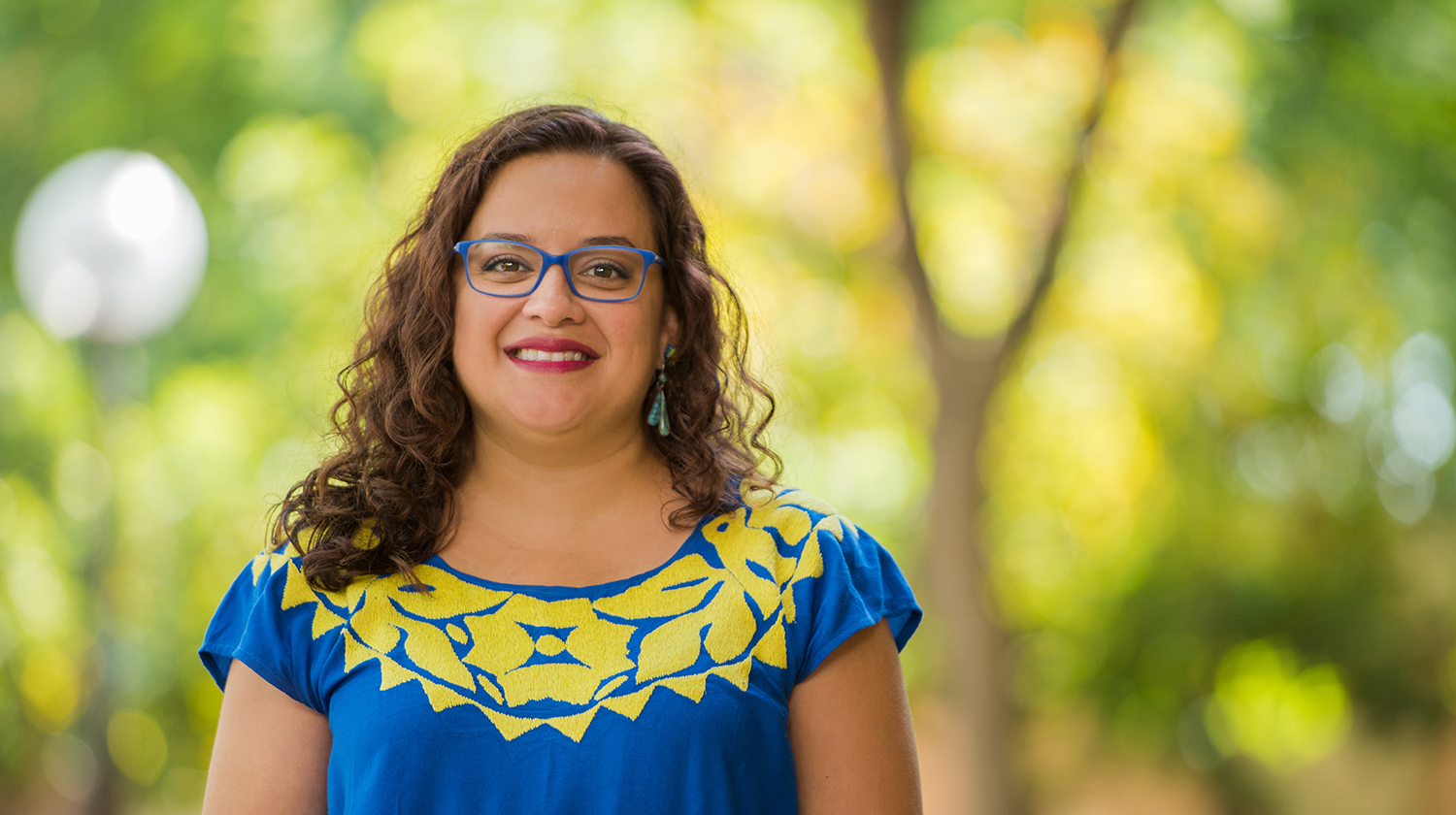
Source: Physics Central
By Korena Di Roma Howley
As a young girl growing up in Sacramento, California, Ximena Cid would sit on her roof and stare at the night sky. “I always had a love of the stars, of the universe,” she says. Today, Cid is chair of the physics department at California State University, Dominguez Hills and has pivoted from a focus in space science to one in physics education research (PER).
“In grad school, I became more and more fascinated with the way people learn [and how] the ways in which we present ideas impacts how people understand them,” she says.
She looks at how topics in physics might be rendered to better support students, noting that teaching in the introductory sequence hasn’t changed significantly in decades. “We’re still teaching in that very standard way,” she says. “What are the ways in which we can actually improve this so that more students feel engaged with the field early on?”
As a Chicana and Indigenous person of Yaqui descent, Cid is particularly interested in how the selective teaching of science history has diminished or discounted altogether the scientific achievements of Indigenous peoples. She is among about 12 Indigenous physics/astrophysics Ph.D. holders in the U.S., and she applies both her own experience and her unique perspective to physics education and issues of diversity, equity, and inclusion (DEI) in the STEM community.
“Often when I think about my own educational path, I look at different moments that created challenges,” she says. “A sense of belonging, a sense of encouragement from our faculty, or freedom to think differently to approach problems–[the lack of] those were all barriers when I was coming into the field.”
Taking a Broad View of Science History
In a study forthcoming in Physical Review Physics Education Research (PRPER), Cid and co-author Stephen Kanim looked at whether physics education research accurately represents student demographics and found that research subjects are generally drawn from a particular subset–primarily white, wealthy, mathematically well-prepared students at selective four-year colleges and universities, where many researchers are based. This suggests that the results of physics education research often reflect homogenous populations that are only a subsection of the broader student community, excluding in particular high school physics students and those at two-year colleges.
For Cid, this narrow focus speaks to a persistent absence of inclusion within the scientific community. “The system as a whole still creates ways that support some populations and not others,” she says, pointing to the GRE admission requirement for advanced degrees in physics, which has been shown to disadvantage historically underrepresented students. “Most of these [standardized tests] are not aligned with competency,” she says. “The physics GRE is more predictive of your gender and your socioeconomic status than it is your potential to succeed in physics programs, and yet we use that exam fairly heavily in a lot of our institutions across the country, so there are biases that are already ingrained and written into our measures of success.”
In examining how the teaching of science history impacts the sense of belonging for historically underrepresented students, Cid asks how the community can better engage different ideas or different histories, including the fact that early Indigenous societies in the Americas also made significant advances in physics and astronomy.
“We’re not acknowledging traditional histories that include the advances made by traditional knowledge, knowledge holders, and the Indigenous populations that existed well before the Americas were colonized,” she says. “As an Indigenous person, I grew up learning about our connection and our understanding of science and astronomy.” Today, she says, students are often entirely disconnected from this history. In her own formal education, Cid never learned about the scientific achievements of ancient civilizations in the Americas, such as the Maya with mathematics. She believes that the absence of this knowledge–and the idea that historically underrepresented students must be trailblazers for their communities–puts undue pressure on those who might be considered “first” in their group to succeed in a field.
“It becomes sometimes very intimidating,” she says. “’How is it that I’m going to be carrying my whole community with me to this place we’ve never been before?’ But that’s actually a false narrative–we have been in these places before. Our ancestors were scientists, architects, engineers, mathematicians, artists, etc. You simply have to visit any of our sacred historical sites to understand that.”
Creating Conversations Through Activism
As the country confronts the realities–and consequences–of deep-seated systemic racism, activists within the physics community have united to voice their support for Black Lives Matter and to bring the work of eradicating racism into their communities. As a co-lead of #ShutDownSTEM, #ShutDownAcademia, and #Strike4BlackLives, Cid contributed to the design of shutting down business as usual for STEM professionals and academics on June 10. The groups–#ShutDownSTEM, Particles for Justice, and #VanguardSTEM–activated the broad STEM and academic communities to educate their members and develop long-term action plans to end systemic racism. The organizers were also intentional about creating space for healing, finding community, and uplifting the voices of Black STEM professionals.
Cid’s parents were heavily involved in both the Chicano and Indigenous civil rights movements, and she’s followed in their footsteps with her active participation in social justice movements, as well as on formalized boards and committees. She’s currently a member of the APS Forum on Diversity and Inclusion, has served on AAPT diversity committees, and has worked frequently with the Society for the Advancement of Chicanos and Native Americans in Science (SACNAS). While on the Board of the National Society of Hispanic Physicists (NSHP), she revitalized Día de la Física/Day of Physics, an event hosted by the NSHP and aligned with the national SACNAS conference, to engage Latinx and Indigenous students. She currently works with Indigenous colleagues to build community for Indigenous students and professionals at all levels.
Conferences and events that bring historically underrepresented groups together are important for combating isolation and other challenges, Cid says. “We start to create these conversations amongst ourselves in professional spaces, and then we start to develop the framework for them out of necessity, so that we can find community when we go back to our isolated home spaces.”
Whether involved with #ShutDownSTEM, #ShutDownAcademia, #Strike4BlackLives or other movements, those who do this work, Cid says, come together with the goal of dismantling structural injustice and structural racism.
“Having my family and community experiences and recognizing injustices has allowed me to use my voice and my presence in different ways,” she says. “But there are also times when I … want to be able to walk into a room and automatically be valued as a physicist.”
Changing the System
Major shortfalls in the nation’s strides toward racial and gender equity have once again come under the microscope, and some businesses, organizations, and academic communities are looking to lead the way in providing an inclusive environment. In the STEM community, groups like #ShutDownSTEM, #VanguardSTEM, and Particles for Justice offer resources on their websites, as well as opportunities to provide support for and actively participate in social justice advocacy.
“Our community at a very basic level should be engaging in professional development around equity, diversity, inclusion, and justice,” Cid says. “If you can’t acknowledge your own biases or prejudices, then you can’t actually create change for the system. Everybody has bias, and we all need to do our part to understand what our biases are.”
Among professional societies, conversations about diversity–such as in professional development workshops–have been hosted annually for many years and are open to those who are willing to seek them out and participate. Home institutions also offer many opportunities to participate in professional development aligned with DEI, and many of them are free.
“When you don’t engage [with these programs],” Cid says, “you’re making an active choice to keep the system as it is … one which benefits some populations over others. If you’re not active in your role to create systemic change, then you are promoting systemic inequities and systemic injustices, and this simply can’t continue any longer.”

